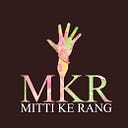Future of Khadi in India
The fashion industry is one of the major polluting industries in the world. Due to dynamic trends and rapid production of clothes “fast fashion” is being promoted. Fast fashion is responsible for increasing the apparel consumption as well as using cheaper fibers for production; resulting in a switch from natural fibers to inexpensive synthetic textiles like polyester. It is crucial to take a step towards eco-friendly fashion and to promote sustainable ways of producing clothes.
Sustainable fashion refers to viewing fashion with respect to stakeholders like users and producers, all living species, contemporary and future dwellers on earth. It is very significant for the producers to shift their focus from producing cheap apparel from easily available fibers to durable clothes from natural fibers that can last materially for a longer period of time.
Many European countries have adapted the practices of upcycling and clothing donations through charitable organizations that directly promote textile recycling businesses.
The idea of sustainable clothing is not unfamiliar to the Land of Mahatma Gandhi.
Mahatma Gandhi promoted khadi fabrics and started spinning himself. Khadi represents India’s ancient handmade textile traditions that go back to 400 BC according to the Greek historian, Herodotus. This fabric is made of cotton. Khadi also is known as khaddar is a versatile fabric and maybe starched to give stiffness. Bapu not only elevated the idea of handwoven clothes but also encouraged the idea of minimalism, by wearing the only dhoti himself.
Khadi is highly sustainable with no machines or energy required, and thus, having a very low carbon footprint. People always relate apparel made of Khadi as frumpy and old school. Khadi has its own signature and mixed with innovation and the latest fashion creates a magnificent ethnicity.
Khadi as an occupation
Production of Khadi fabrics encourages self-employment and the constructive development of weaker sections of society. Spinning is easy to learn and requires low capital. It is one of the best ways to boost the economy of rural India and advance towards a green economy and self-reliance. The majority of the workforce in the textile industry are women and hence, empowering indigenous khadi fabrics can provide a stable livelihood to women across-the-board.
A meter of khadi fabric consumes three liters of water, while one meter of mill-produced fabric requires 55 liters of the precious resource.
In a market that is flooded with duplicate synthetic products, khadi is a trademark of originality. Khadi textiles are for people who are looking for quality products. Khadi products are handmade by laborers and are time taking. While the cost of production in bulk processing in mills is less as it can produce more products in a given time. What makes the khadi products rationale for its selling price is its incomparable quality. Moreover, Khadi is not like any other textile which is made only for a profit gain and for definite goals to achieve.
A solution that can act effectively in reducing the selling price of khadi products is the exemption of GST which is 5 percent. One of the major drawbacks is the marketing of finished products. Much effort should be applied both by corporate as well as government sectors to market Khadi textiles. The production of khadi should be in balance with its demand which will resolve the piling up of stocks. Many textile industries believe that the handwoven industry can be competitive with other industries if provided with more subsidies. Khadi is the product of the future with high purchasing capabilities. Khadi Movement became efficient in gaining economic independence during the Indian freedom struggle. It should be realized that khadi again will be the basic unit to gain environmental freedom.
Contributed By- Madhvan Dikshit, Content Writer @ Mitti Ke Rang
At Mitti Ke Rang, we started with a COVID-19 community support fundraising, as an emergency response to provide a safety net to families. This will help them survive in the lockdown period. We aim to directly support these families by providing a minimum wage, through transferring the same into their accounts or partner with local NGO, Organisation, Fellow, or a Volunteer and support them with groceries.
You can donate at:
Our Social Media:
LinkedIn — https://www.linkedin.com/in/mitti-ke-rang-mkr-81b230120/
Twitter: https://twitter.com/mitikerang?s=08
Instagram: https://www.instagram.com/mitti_ke_rang?r=nametag
Facebook: https://www.facebook.com/Mitikerang/
YouTube:
